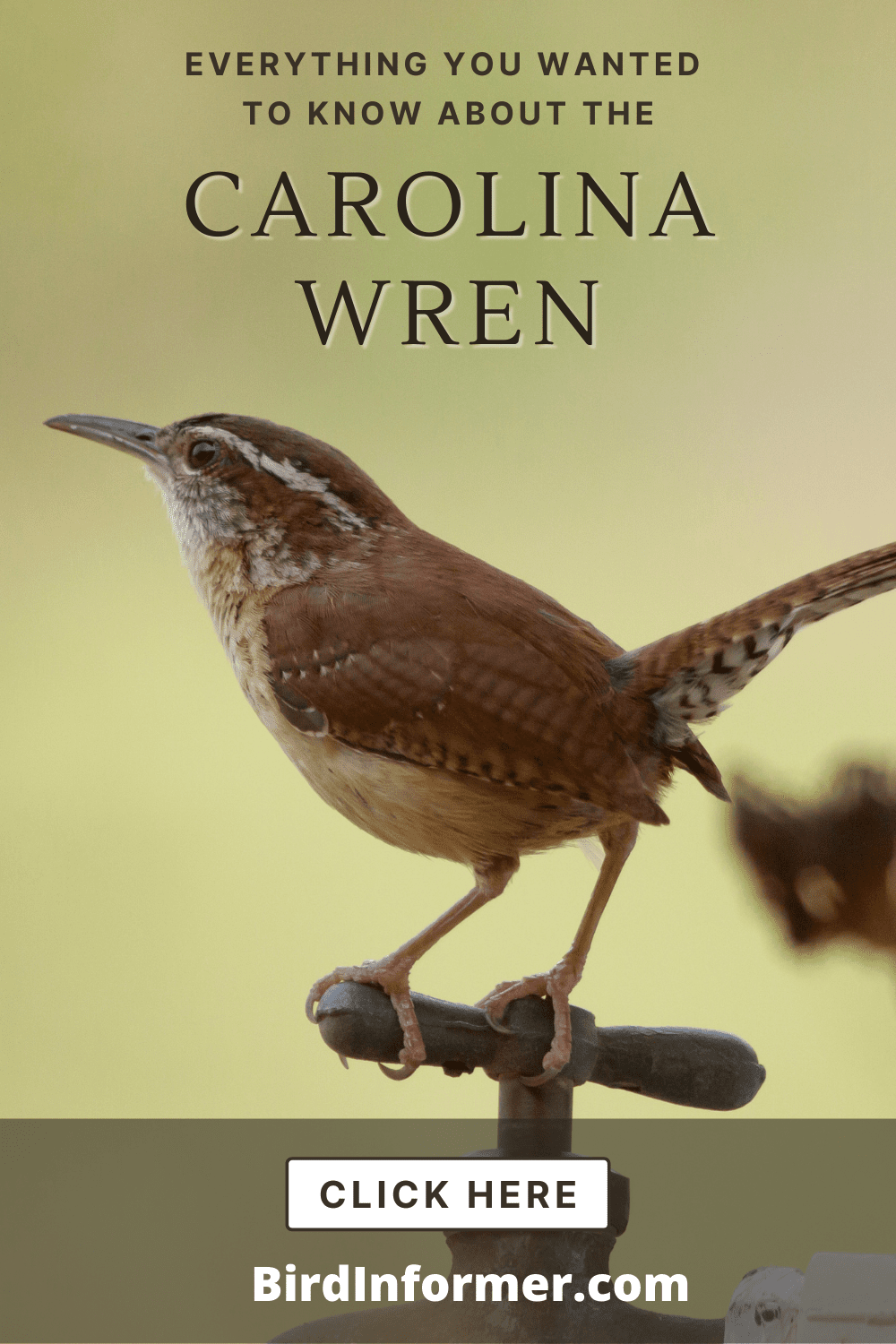Contents
- Carolina wren facts
- Carolina wren: how-to identify
- Carolina wren bird vocalization
- Where You’ll See Carolina Wren
- Carolina wren diet
- Carolina wren nesting
- Carolina wren behavior
- How-to attract carolina wren
- Carolina wren threats
- Carolina wren fun & interesting facts
- Carolina wren related species in this family
Carolina Wren is a small-sized bird that can be found in the southeastern part of the United States. The birds are known for their tails that always pointed upwards, and their bird calls pierce through your ears. Their color pattern is a different shade of brown, rusty at the back, and light cinnamon on their chest. These birds are also known to be shy and are not often seen unless you attract them in your backyard.
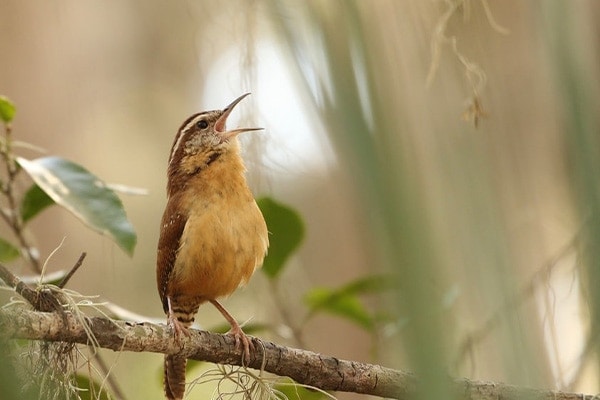
In this article, we are going to cover a wide variety of topics related to the Carolina Wren, such as:
- How to identify them
- How, when, and where they migrate
- Their diet
- How and where they nest
- And much more…
So, without any more delay…
Let’s jump right into it and learn more about the Carolina Wren.
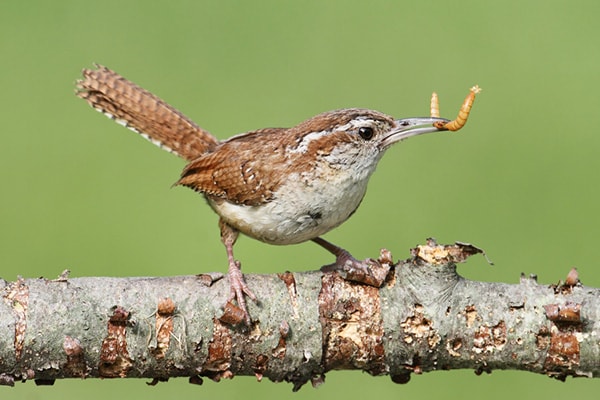
Carolina wren facts
- Common Name: Carolina Wren
- Scientific Name: Thryothorus ludovicianus
- Scientific Family: Troglodytidae
- Life Span: 6 years
- Size: 4.7 to 5.5 inches
- Wingspan: 11.4 inches
- Weight: 0.6 to 0.8 oz
- Conservation status: Least Concern (LC)
Carolina wren: how-to identify
Carolina Wrens are small and rounded birds with large heads and little necks. The color pattern is a combination of reddish-brown at the back and light cinnamon on their chest. The throat and chin areas are white, and their eye area has this single white line.
The bird’s bill is long, thin, and slightly curved. The wings and tail area are brown-colored with black and thin white bars. Their short tails are also usually cocked to emphasize the bars.
Differences Between Male & Female
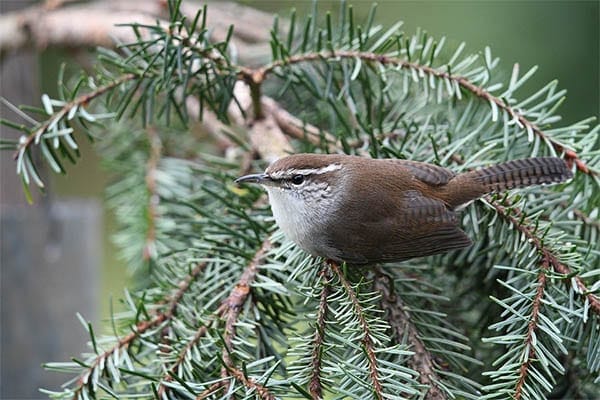
An adult male and female Carolina Wrens look very similar to each other. However, it has been noted that males tend to be heavier, and at the same time, their features are sticking out more.
Differences In Summer Plumage vs Winter Plumage
There’s also not a lot of difference in the birds’ color patterns between summer and winter. But it has been found that the population of Carolina Wren in Florida is larger and rounder. Their back parts are also a lot rustier, and the chest part is a deep brown color.
Carolina wren bird vocalization
Where You’ll See Carolina Wren
Carolina Wrens are mainly found in the southeastern United States as they can’t survive freezing winters. However, they have also spread in the northern part of the US all the way to New England.
These birds stay in various habitats like vegetated habitats, shrubby and wooded residential areas, overgrown farmlands, etc. Generally, the birds love moist woodlands and brushy covers.
Carolina wren bird migration
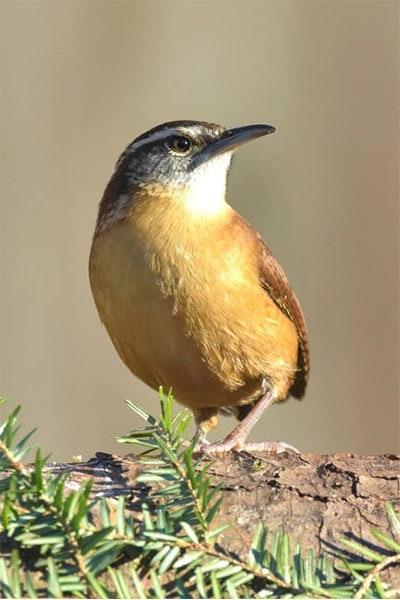
Carolina Wrens are non-migratory birds. So, you can expect to see them all-year-round in the southeastern United States just hopping around. Although, there are instances when a number of them wander to the north, particularly in the fall season.
Carolina wren diet
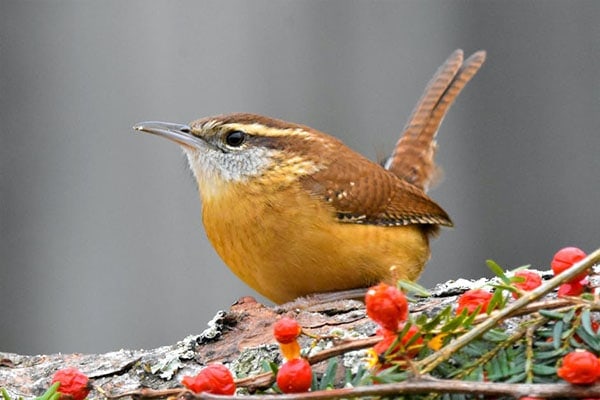
Carolina Wrens are known to be carnivores (insectivores for birds). A huge part of their diet consisted of mostly insects such as caterpillars, moths, leafhoppers, grasshoppers, caterpillars, spiders, and a lot more. They also eat lizards, frogs, and snakes sometimes.
When insects aren’t available during winter, they eat some small fruits, berries, and seeds like poison ivy, acorn, sweetgum, and bayberry seeds.
These birds usually search low on the ground for food in pairs. They move brushes and vegetation to search for food hidden under some roots, tree barks, masses of logs, and brush piles using their bills.
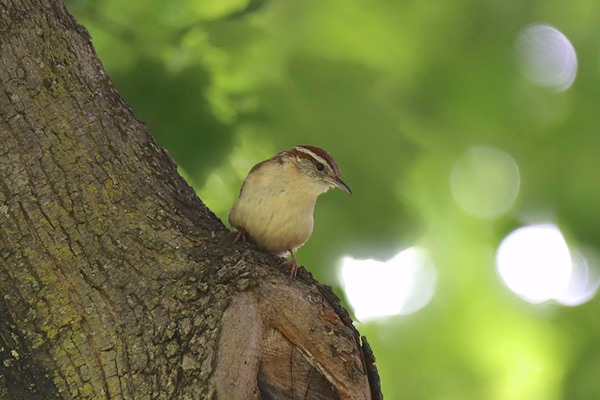
Carolina wren nesting
- Clutch Size: 3-7 eggs
- # of Broods: 1-3 broods
- Incubation Period: 12-16 days
- Nestling Period: 10-16 days
- Egg Description: White, cream, or pinkish white with fine, rusty-brown spots
Carolina Wrens are monogamous birds, which means they breed for life. They stay together throughout the year, defending their territories.
When breeding starts around March to October, the two birds will look for an area to build the nest. This is usually in open cavities of trees, stumps, woodpecker holes, crevices in buildings, nest boxes, and more. Basically, these birds can build their nests anywhere with space, whether natural or man-made.
So they are very versatile birds that can stay anywhere. There are even times when males build several nest sites until the two of them make the final choice.
The nest is built together by the pair where one stays at the site, and the other gathers materials. They typically use twigs, leaves, and weeds to act as the nest’s foundation, and then they add a softer lining with moss, grass, feathers, and animal hair. It usually takes a week to build the first nest, but the later ones they will build just take about four days.
The result is a cup-shaped nest with a side entrance. There’s also sometimes an extension built as a porch or the birds’ entrance ramp.
Carolina wren behavior
Carolina Wrens are diurnal birds, which means they are most active during day time. They usually work alone or in pairs, finding food on the ground. If the pair already has fledglings, they often feed as a family.
These birds are non-migratory and are terrestrial. They run or hop on the ground or near the ground just above leaf litters and vegetation. Known to be weak flyers, the birds often make short and erratic flights. They can’t fly far, so their wings are often used to assist them in making some leaps.
Most people describe these birds as shy and bold – they love to stay in hiding but are very vocal.
How-to attract carolina wren
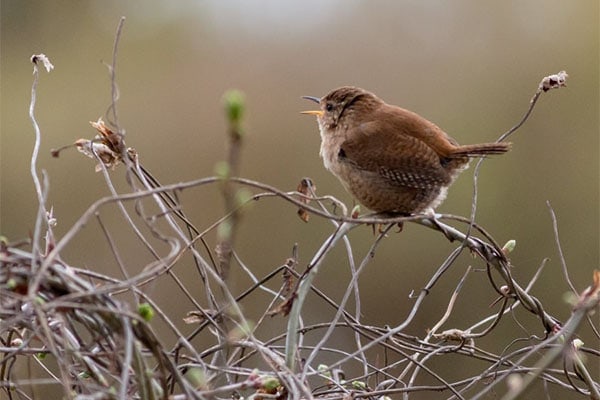
Since Carolina Wrens are non-migratory birds, you would have to visit them where you’ll see them – the southeastern US, particularly in South Carolina. So, if you’re already in their breeding areas and want to attract these birds, it’s fairly easy.
First of all, you need to provide these birds the right food. Since Carolina Wrens eat a lot of insects, it’s highly recommended not to use insecticides and not to clean up spider webs. You should also leave a pile of leaves intact to encourage insects, snails, and slugs there.
These birds also visit feeders, so if you plan to use one, buy the platform or tray feeder. Then, place some mealworms, peanut butter, and suet. Or you can smear the peanut butter and suet on a trunk or branch to encourage the birds to visit.
These birds also eat small fruits and berries, so plant some trees and shrubs as well. At the same time, it serves as a shelter for these birds. If you want to provide nesting sites, you can hang some empty flower pots, garaged shelves, or a nesting box. Then, provide some materials that the bird can use for building their nest, too.
But most of all, don’t forget to provide water to drink. Birdbath fountains would be perfect, and to help support Carolina Wrens during winter, you can opt for a heated birdbath.
If you already own a bird bath, check this helpful article…
Carolina wren threats
Carolina Wrens are observed to be increasing in numbers. Thanks to the fragmentation of forests and efforts for reforestation. However, predators such as blue jays, hawks, raccoons, snakes, squirrels, foxes, and chipmunks are still a threat to Carolina Wren’s eggs and nestlings.
Carolina wren fun & interesting facts
- Carolina Wren is also referred to as the Great Carolina Wren.
- This is the state bird of South Carolina.
- Their scientific name means “reed-jumper of Louisiana”.
- Only the male Carolina Wren sings loudly to attract female Carolina Wren.
- There’s one male Carolina Wren that was recorded to have sung 3,000 times in one day.
- The longest lifespan recorded of a Carolina Wren is seven years and eight months.
- Rock Wren
- Canyon Wren
- House Wren
- Pacific Wren
- Winter Wren
- Sedge Wren
- Marsh Wren
- Bewick’s Wren
- Cactus Wren

